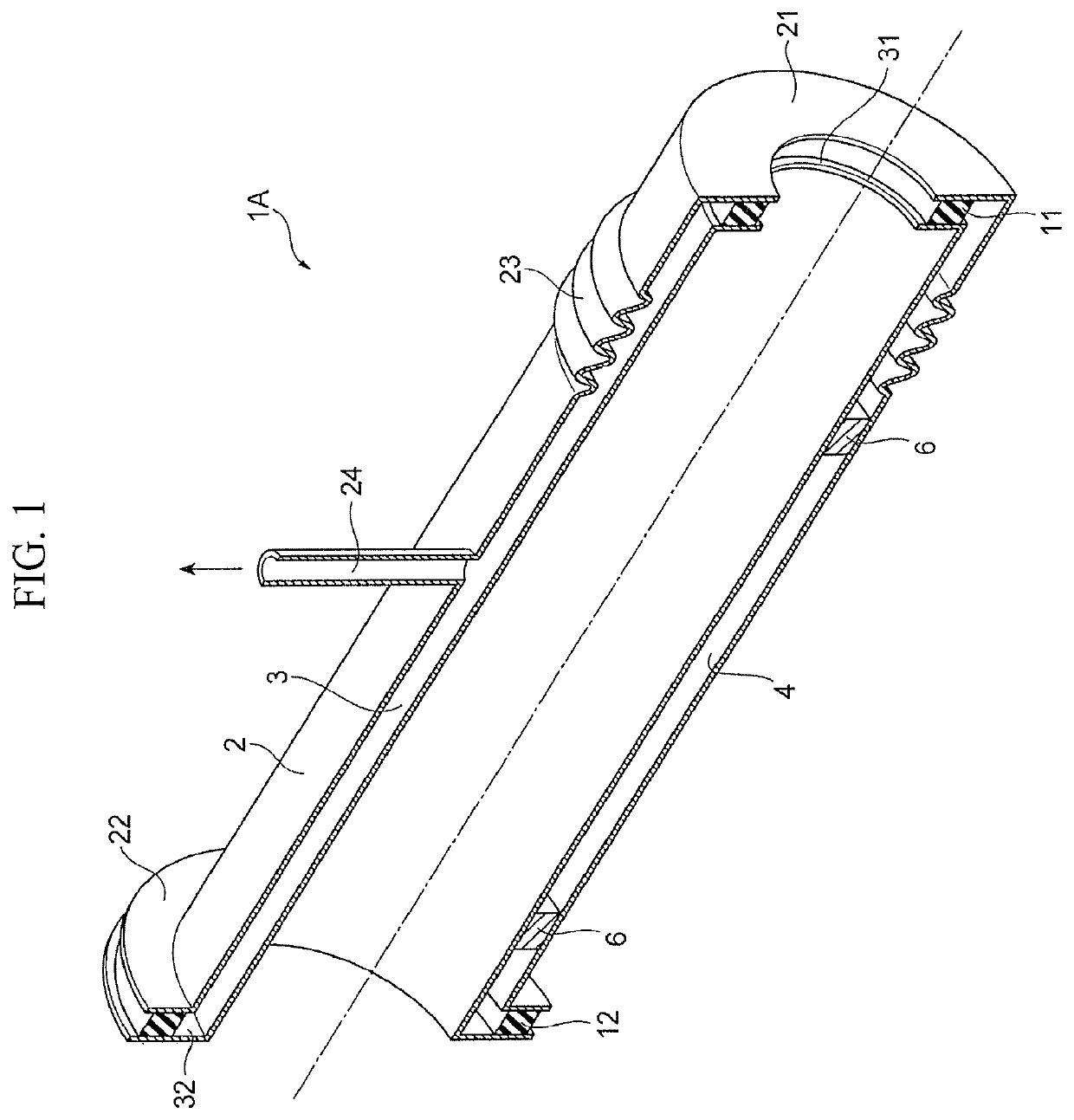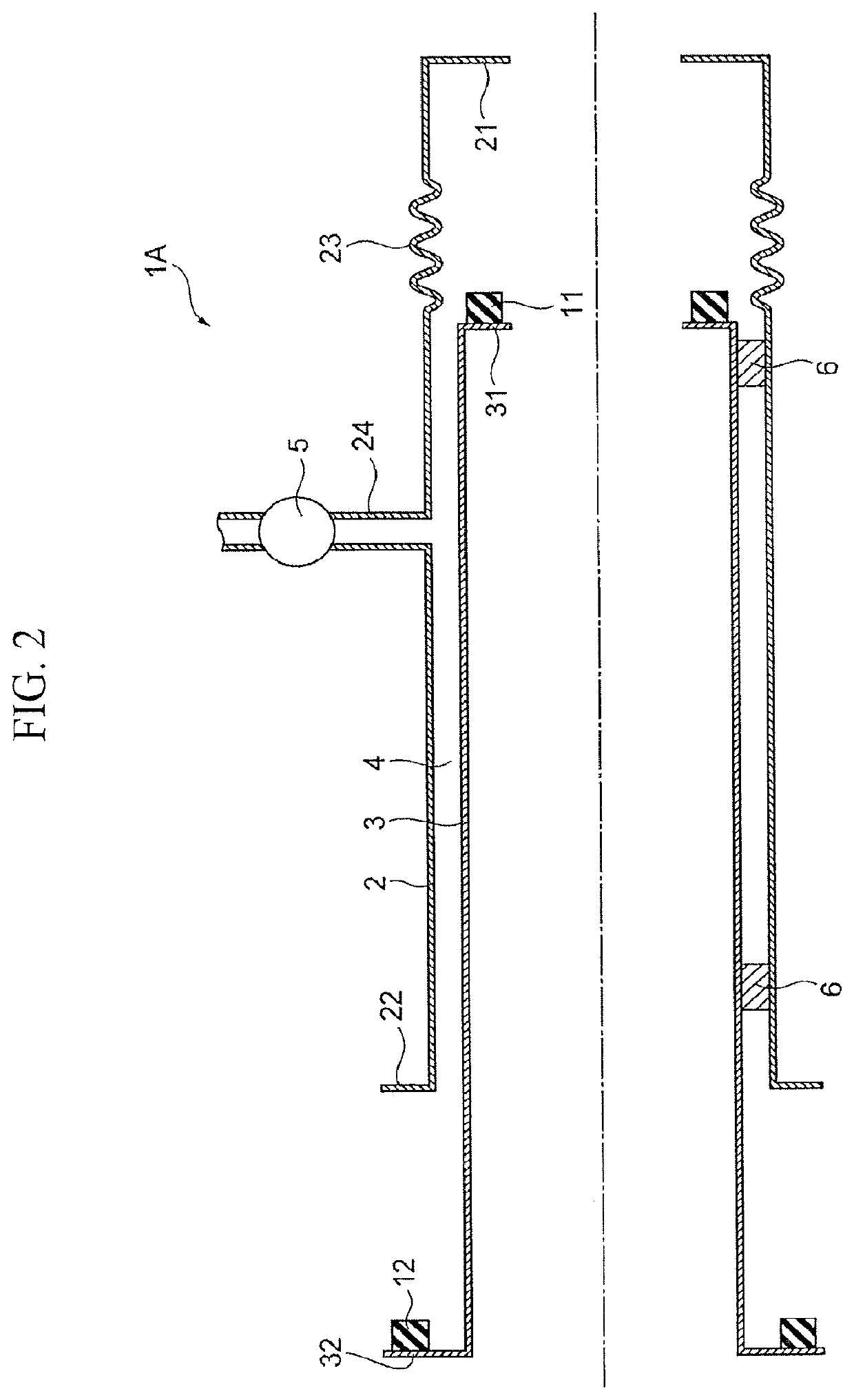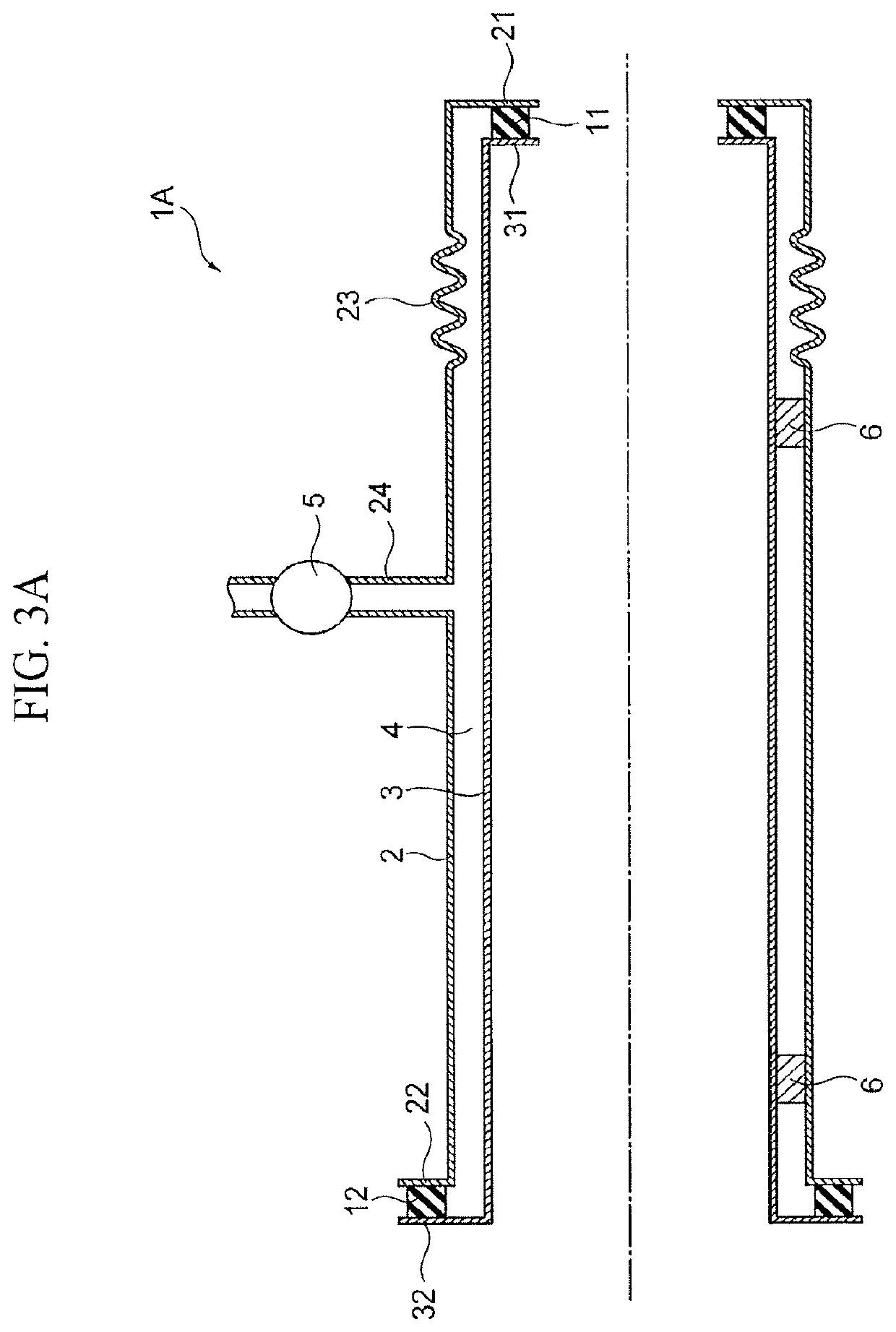Decompression heat-insulating pipe structure
a heat-insulating pipe and decompression technology, which is applied in the direction of domestic cooling apparatus, charge manipulation, furnaces, etc., can solve the problems of difficult decompression, inability to exhibit heat-insulating performance, and inability to decompress, so as to achieve easy assembly and suppress the effect of thermal expansion deformation
- Summary
- Abstract
- Description
- Claims
- Application Information
AI Technical Summary
Benefits of technology
Problems solved by technology
Method used
Image
Examples
first embodiment
[0027]Next, a first embodiment of the present disclosure will be described in detail with reference to the drawings.
[0028]FIG. 1 is a perspective cross-sectional view of a decompression heat-insulating pipe structure in accordance with the first embodiment.
[0029]A decompression heat-insulating pipe structure 1A has a double-tube structure including an outer tube 2 and an inner tube 3 inserted into the outer tube 2. A space between axially one end of the outer tube 2 and axially one end of the inner tube 3 is sealed with a first elastic seal member 11, while a space between the axially other end of the outer tube 2 and the axially other end of the inner tube 3 is sealed with a second elastic seal member 12.
[0030]The outer tube 2 connects with an exhaust channel 24 leading to a vacuum pump 5 (see FIG. 2). Air between the outer tube 2 and the inner tube 3 is exhausted through the exhaust channel 24 so that a space 4 between the outer tube 2 and the inner tube 3 can be decompressed. Suc...
second embodiment
[0058]Next, a second embodiment of the present disclosure will be described in detail with reference to the drawings. It should be noted that the same components as those in the first embodiment are denoted by the same reference numerals and detailed description will be omitted.
[0059]FIG. 4A is a cross-sectional view showing a state before the internal space of an inner tube of a decompression heat-insulating pipe structure in accordance with the second embodiment is heated. FIG. 4B is a cross-sectional view showing a state in which the internal space of the inner tube of the decompression heat-insulating pipe structure in accordance with the second embodiment is heated.
[0060]A decompression heat-insulating pipe structure 1B in this embodiment is characterized in that an outer tube 2 is formed with a first outer tube 2A and a second outer tube 2B so that the axial length of the outer tube 2 is made adjustable.
[0061]The decompression heat-insulating pipe structure 1B has the outer tu...
third embodiment
[0084]Next, a third embodiment of the present disclosure will be described in detail with reference to the drawings. It should be noted that the same components as those in the first embodiment are denoted by the same reference numerals and detailed description will be omitted.
[0085]FIG. 6 is a cross-sectional view showing an exemplary configuration of a decompression heat-insulating pipe structure in accordance with the third embodiment.
[0086]This embodiment is characterized in that an inner tube 3 of a decompression heat-insulating pipe structure 1C is formed with a first inner tube 3A and a second inner tube 3B so that the axial length of the inner tube 3 is made adjustable.
[0087]The decompression heat-insulating pipe structure 1C has an outer tube 2 and the inner tube 3. The outer tube 2 has a first flange 71 extending radially inward from its axially one end, and has a second flange 72 extending radially inward from its axially other end.
[0088]The inner tube 3 has a first inner...
PUM
| Property | Measurement | Unit |
|---|---|---|
| decompression heat-insulating | aaaaa | aaaaa |
| heat-insulating performance | aaaaa | aaaaa |
| radial dimension | aaaaa | aaaaa |
Abstract
Description
Claims
Application Information
 Login to View More
Login to View More - R&D
- Intellectual Property
- Life Sciences
- Materials
- Tech Scout
- Unparalleled Data Quality
- Higher Quality Content
- 60% Fewer Hallucinations
Browse by: Latest US Patents, China's latest patents, Technical Efficacy Thesaurus, Application Domain, Technology Topic, Popular Technical Reports.
© 2025 PatSnap. All rights reserved.Legal|Privacy policy|Modern Slavery Act Transparency Statement|Sitemap|About US| Contact US: help@patsnap.com



